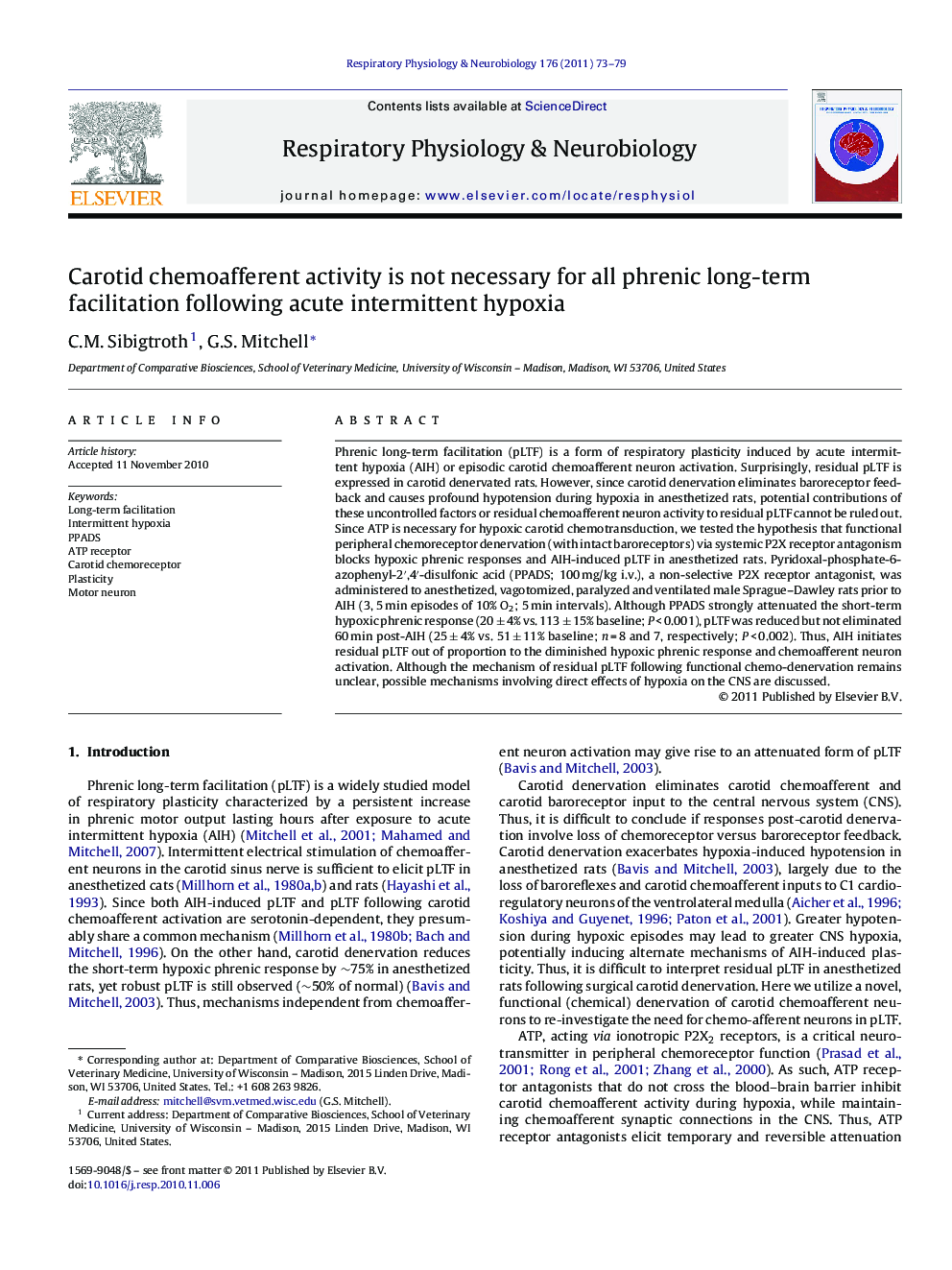| Article ID | Journal | Published Year | Pages | File Type |
|---|---|---|---|---|
| 2847458 | Respiratory Physiology & Neurobiology | 2011 | 7 Pages |
Phrenic long-term facilitation (pLTF) is a form of respiratory plasticity induced by acute intermittent hypoxia (AIH) or episodic carotid chemoafferent neuron activation. Surprisingly, residual pLTF is expressed in carotid denervated rats. However, since carotid denervation eliminates baroreceptor feedback and causes profound hypotension during hypoxia in anesthetized rats, potential contributions of these uncontrolled factors or residual chemoafferent neuron activity to residual pLTF cannot be ruled out. Since ATP is necessary for hypoxic carotid chemotransduction, we tested the hypothesis that functional peripheral chemoreceptor denervation (with intact baroreceptors) via systemic P2X receptor antagonism blocks hypoxic phrenic responses and AIH-induced pLTF in anesthetized rats. Pyridoxal-phosphate-6-azophenyl-2′,4′-disulfonic acid (PPADS; 100 mg/kg i.v.), a non-selective P2X receptor antagonist, was administered to anesthetized, vagotomized, paralyzed and ventilated male Sprague–Dawley rats prior to AIH (3, 5 min episodes of 10% O2; 5 min intervals). Although PPADS strongly attenuated the short-term hypoxic phrenic response (20 ± 4% vs. 113 ± 15% baseline; P < 0.001), pLTF was reduced but not eliminated 60 min post-AIH (25 ± 4% vs. 51 ± 11% baseline; n = 8 and 7, respectively; P < 0.002). Thus, AIH initiates residual pLTF out of proportion to the diminished hypoxic phrenic response and chemoafferent neuron activation. Although the mechanism of residual pLTF following functional chemo-denervation remains unclear, possible mechanisms involving direct effects of hypoxia on the CNS are discussed.
